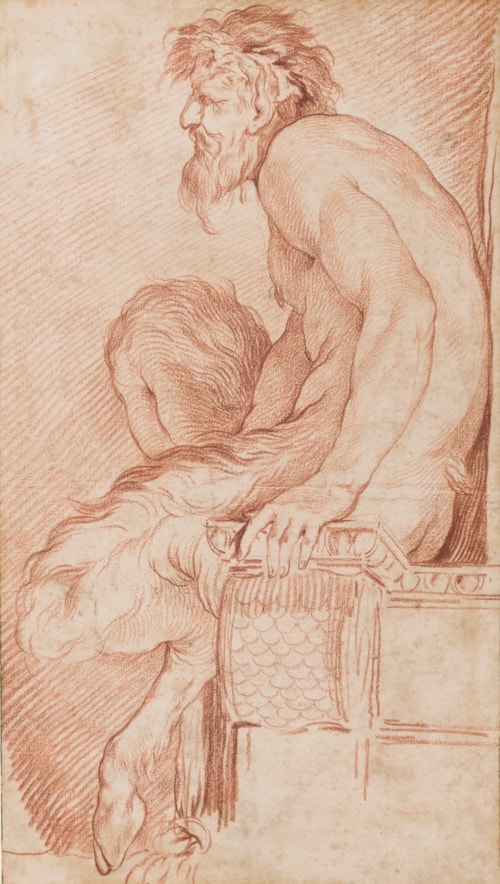
Edmé BOUCHARDON
Chaumont-en-Bassigny 1698 - Paris 1762
Biography
One of the most significant French sculptors of the 18th century, Edme Bouchardon was a pupil of Guillaume Coustou and won the Prix de Rome for sculpture in 1723. He spent the next nine years in Rome, receiving commissions for sculptures and portrait busts from British and French visitors to the city, and was admitted to the Roman Accademia di San Luca in 1723. He was also involved in several significant sculptural projects and competitions during his time in Rome, notably the design for the tomb of Pope Clement XI in St. Peter’s and that of the Trevi Fountain. Bouchardon returned to Paris in 1732 and in 1736 was appointed draughtsman to the Académie des Inscriptions et Belles-Lettres, with an annual income of 1,000 livres. Over the course of the next twenty-five years, from 1737 until a few months before his death, Bouchardon provided a large number of designs for both medals and tokens to be executed by various graveurs-médailleurs for the Royal Mint. Admitted into the Académie Royale in 1745, Bouchardon obtained prestigious Royal and public commissions throughout his later career - notably the Fountain of the Four Seasons on the rue de Grenelle in Paris and an equestrian monument to Louis XV, which stood on the Place de la Concorde until the Revolution - and his fame and reputation as a sculptor was unrivalled in the 18th century.
Bouchardon was regarded by connoisseurs, collectors and fellow artists as one of the finest draughtsmen of his day. He was as well known for his drawings as for his sculptural works and indeed chose to exhibit both sculptures and finished drawings (mainly historical and allegorical subjects, as well as portraits) at the Salons. Bouchardon worked almost exclusively in red chalk, and while many of his drawings were intended as preparatory studies for his sculptural projects, many more were done as independent works. That his drawings were greatly admired by his contemporaries is seen in the comments of the artist Charles-Nicolas Cochin, who described Bouchardon as ‘certainly the greatest sculptor and the best draughtsman of his century.’ The 18th century collector and connoisseur Pierre-Jean Mariette likewise rated Bouchardon very highly as a draughtsman and assembled the largest private collection of his drawings, including the present sheet. Similarly, artists as François Boucher, Jean-Baptiste Deshays, Charles-Joseph Natoire and Jean-François de Troy all owned drawings by Bouchardon. Around two thousand drawings by Bouchardon survive today, of which by far the single largest group – numbering around 1,300 sheets, mostly acquired by bequest from the artist’s descendants – is today in the Louvre.


